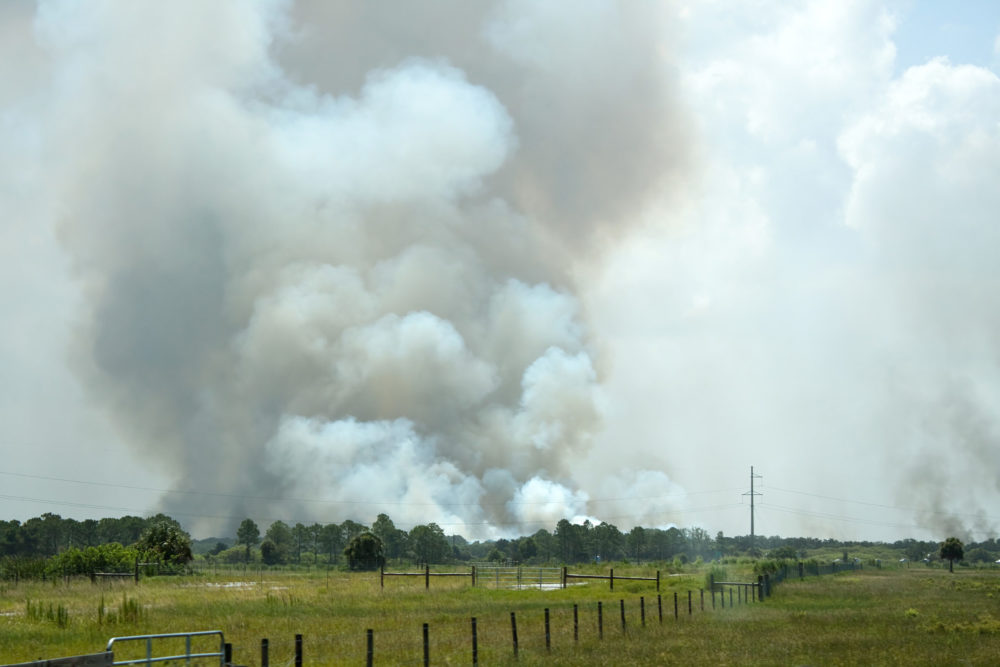When we talk about smoke damage, the images that might pop up in mind are those of burnt rooms and soot-covered furniture and surfaces. This is an accurate picture of what smoke damage looks when it affects houses and buildings.
Smoke damage is the term used to describe the physical or structural destruction due to smoke. While the fire itself can cause ruin to persons and property, smoke can also lead to devastating consequences. It can linger on as a persistent odor, as soot coating on items that’s hard to get rid of, or other forms of damage.
In the case of wildfires, smoke can cause damage to the environment too. Smoke can typically adversely affect the air, water, plants and animals. Especially in the western side of the US, fire claims California homes, plants and animals and affects their water sources most notably during draughts too.
How Smoke from Wildfires Affects Air Quality
Smoke can obviously pollute the air in and near the wildfires. This is the case for small forest fires that don’t have enough energy to push the smoke toward the atmosphere. So, smoke pollution tends to stay close to areas where the blaze started.
However, wildfire smoke can also travel thousands of miles away and cause visibility issues and smoke pollution. This tends to be the case with massive wildfires. For instance, smoke from wildfires in California or Oregon can rise to the atmosphere and get carried by winds to Utah or even as far away as New York. Then the smoke cools and it settles.
Smoke contains carbon monoxide, whether it originated from a big or small wildfire. And, whether that smoke lingers near the origin of the blaze or travels thousands of miles away, smoke exposure affects people, plants, animals and the environment.
Smoke from Wildfires and the Ozone Layer
A recent study found that the Australian wildfires of 2019 and 2020 were not only historic and devastating in terms of their speed, reach, intensity and duration but also for their effects on the ozone layer.
In the 1980s, scientists discovered a hole in the ozone layer. This led to worldwide efforts which have resulted in its slow healing of around 1% to 3% per decade. However, the study estimates that the massive Aussie fires may have just rolled back the healing process by a decade. Researchers estimate that the smoke-induced chemical reaction has led to the depletion of the ozone layer by 1%.
Smoke from Wildfires and Its Impact on the Sun’s Rays
Smoke from wildfires can block the sun and affect incoming solar radiation, or the absorption and scattering of the sun’s rays. Specifically, it’s the brown carbon in the smoke that does this. Brown carbon is produced from smoldering biological matter like grass or wood.
“Most of the brown carbon released into the air stays in the lower atmosphere, but we found that a fraction of it does get up into the upper atmosphere, where it has a disproportionately large effect on the planetary radiation balance — much stronger than if it was all at the surface,” explains Rodney Weber, a professor in Georgia Tech’s School of Earth & Atmospheric Sciences.
This can result in either a colder or warmer temperature, but ultimately, to a worsening climate change. More on this below.
Wildfire Smoke and Climate Change
Wildfires emit huge quantities of carbon dioxide (CO2). Scientists estimate the CO2 emissions to be around 8 billion tons annually for the last two decades.
While the Earth has a natural carbon cycle in place, this process is slow. It takes between 100 to 200 million years for carbon to move from the rocks to the atmosphere. With wildfires, that process is sped up, resulting in the release of huge amounts of carbon dioxide in a very short period of time. For instance, in 2017, a fire in California’s wine country shot up the equivalent of one year’s worth of carbon emissions from cars and trucks in just one week.
Carbon dioxide, along with other greenhouse gases, can worsen climate change, which in turn will result in more wildfires and other environmental disturbances. “If we start to see a higher level of fire activity than in the past because of global warming, they become part of a climate feedback loop,” Guido van der Werf, a Dutch researcher working for the Global Fire Emissions Database, told Inside Climate News. That means warming causes more fires, which causes more warming.
How Smoke from Wildfires Impacts Water Bodies
Smoke contains chemicals and particles that can contaminate and pollute bodies of water in the areas surrounding the fire and even farther afield.
A major contaminant from wildfire smoke is ash. Ash lands on plants near the area of the blaze. When it rains, the ash gets carried off into rivers, streams, and other reservoirs downstream, thanks to the foliage-free soil. Because vegetation has been burned off, ash and other debris gets transported easily to water bodies where they discolor the water and impact its quality.
A more problematic matter is pollutants from wildfire smoke. They can pollute the water for years, adversely impacting the quality and quantity of water available for human and animal use. For instance, a wildfire near Brian Head in 2017 led to the contamination of this Utah resort town’s drinking water sources.
How Smoke from Wildfires Damages Plants
Smoke and other particulate matter that come with it can block sunlight from reaching the ocean depths. As a result, marine plants and animals that rely on photosynthesis begin to die out. This was exactly what happened to coral reefs in the Indian Ocean after wildfires erupted in Indonesia in 1997.
It also triggers a rise in algae growth, thanks to elevated levels of nutrients (phosphorus and nitrogen). Algal blooms will deplete oxygen in the water which can suffocate the marine species living there.
In the terrestrial realm, wildfire smoke exposes grass, shrubs, trees, and other plant life to increased heat and smoke. Prolonged hazy conditions could also stunt their growth. In addition, ash and other smoke particles can block the plants’ stomata which they use to take in carbon dioxide and release oxygen. Plants become suffocated and this stress can start to show up as leaf discoloration, wilting, and slow growth. Though not common, some grapes in California were even found to have changed flavor after a fire.
How Smoke from Wildfires Affects Animals
When smoke reaches the ocean, smoke particles can block the gills of fish which leads to their death. Large marine mammals like whales and dolphins, which breathe through blowholes, could inhale chemicals and become sick.
In land animals, prolonged smoke exposure can affect their lungs, throat and mouth. Because of difficulty breathing, they can also begin to move sluggishly. When this happens, they could be overtaken by the blaze and get injured or die.
Wildfires also result in the destruction of animal habitats and the contamination of their food and water sources, so they are forced to move. Traveling through new environments can mean exposure to predators and household pets as well as speedy vehicles on highways.
Do wildfires cause smoke damage to the environment?
In conclusion, in the case of wildfires, smoke can cause damage to the environment while adversely affecting air quality, water sources, plants and animals.





